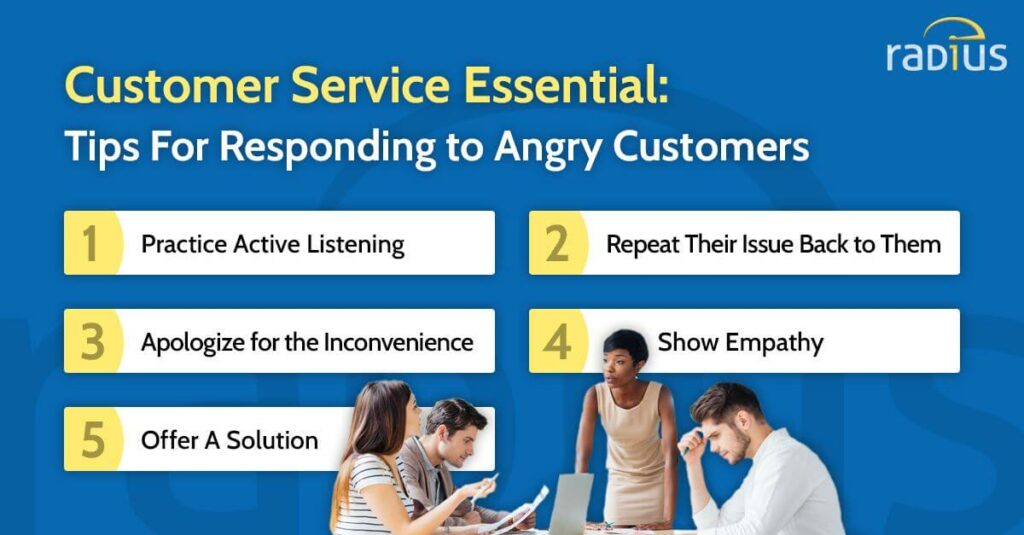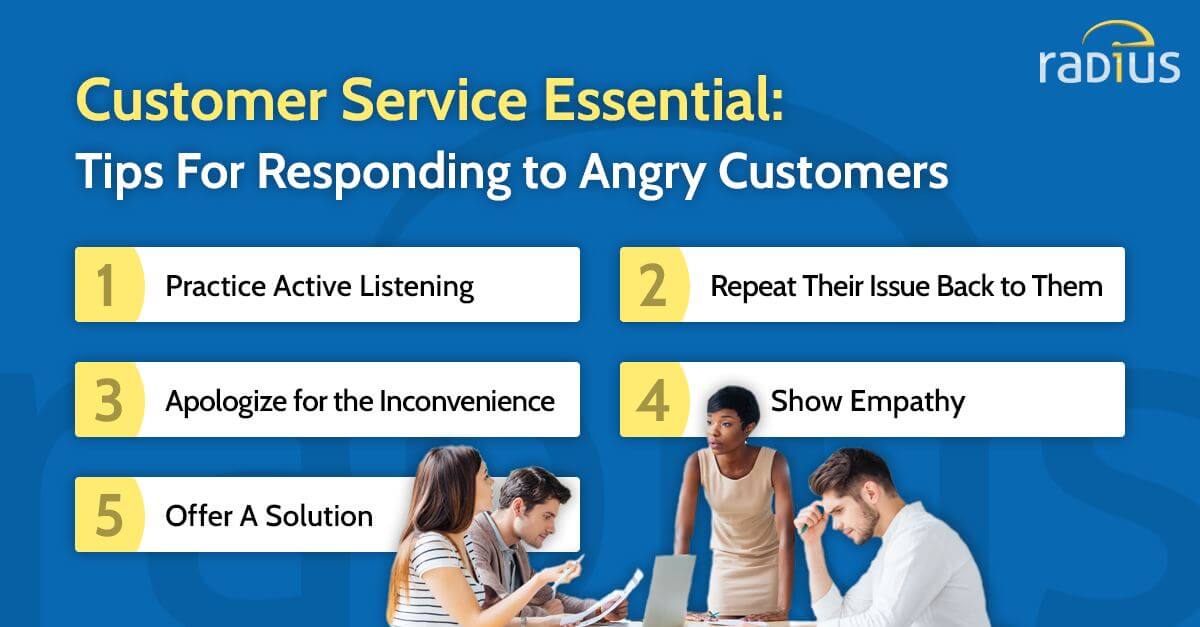6 Strategies for Dealing with Difficult Customers


In the fast-paced world of customer service, dealing with difficult customers is an inevitable part of the job. These challenging interactions can leave both the customer and the service representative feeling frustrated and unsatisfied. However, by employing the right strategies, it is possible to turn these potentially negative situations into opportunities for growth and improvement. In this comprehensive guide, we will explore six effective strategies for handling difficult customers, ensuring you can defuse conflicts, maintain professionalism, and ultimately, keep your customers satisfied.
Practice Active Listening and Empathy
One of the most crucial components of effective customer service is the ability to listen actively and empathetically to your customers’ concerns. By truly understanding the root of their issues, you can tailor your response to address their specific needs. To practice active listening, follow these steps:
- Pay close attention to the customer’s words, tone, and body language.
- Ask clarifying questions to ensure you have a complete understanding of their concern.
- Paraphrase their issue back to them to confirm your comprehension.
- Show empathy by acknowledging their feelings and validating their emotions.
Stay Calm and Maintain Professionalism
Dealing with difficult customers can be emotionally taxing, but it is essential to remain calm and composed throughout the interaction. By maintaining a professional demeanor, you can prevent the situation from escalating and ensure that the conversation remains focused on finding a solution. To stay calm under pressure, try these techniques:
Take deep breaths to regulate your emotions.
Maintain a neutral tone of voice and avoid raising your voice.
Focus on the issue at hand rather than the customer’s emotions.
Remind yourself that the customer’s frustration is not a personal attack.
Offer Solutions and Alternative Options
When faced with a difficult customer, your primary goal should be to resolve their issue as efficiently and effectively as possible. By offering solutions and alternative options, you can demonstrate your commitment to their satisfaction and foster a sense of goodwill. To provide effective solutions, follow these guidelines:
Assess the customer’s needs and identify potential resolutions.
- Present multiple options when possible, giving the customer a sense of control.
- Explain the benefits and drawbacks of each option, allowing the customer to make an informed decision.
- Be willing to collaborate with the customer to find a mutually agreeable solution.
Set Boundaries and Manage Expectations
While it is essential to accommodate your customers’ needs, it is also necessary to establish boundaries and manage expectations. By doing so, you can ensure that both parties are clear on what is possible and avoid further conflict down the line. To set boundaries and manage expectations, consider these tips:
- Be honest about what you can and cannot do to resolve the issue.
- Clearly communicate any limitations or restrictions that may impact the resolution.
- Set a realistic timeline for when the issue will be addressed.
- Provide regular updates to keep the customer informed of your progress.
Know When to Escalate the Issue
In some cases, dealing with a difficult customer may require the intervention of a supervisor or manager. Knowing when to escalate the issue can ensure that the customer receives the appropriate level of support and prevent further damage to the relationship. To determine if escalation is necessary, ask yourself:
- Have I exhausted all possible solutions?
- Is the customer becoming increasingly agitated or confrontational?
- Would a higher level of authority help to resolve the issue more effectively?
Learn from the Experience and Continuously Improve
Finally, it is important to view each difficult customer interaction as an opportunity for growth and improvement. By reflecting on the experience and identifying areas for development, you can enhance your customer service skills and better prepare for future challenges. To learn from difficult customer interactions, consider these steps:
- Analyze the situation and identify any factors that contributed to the conflict.
- Seek feedback from colleagues or supervisors to gain additional perspectives.
- Identify specific areas for improvement, such as communication, problem-solving, or emotional intelligence.
- Implement changes to your approach, incorporating the lessons learned from previous experiences.
Conclusion
Dealing with difficult customers is an inevitable aspect of working in customer service, but by employing the right strategies, you can turn these challenging situations into opportunities for growth and success. By practicing active listening and empathy, remaining calm and professional, offering solutions and alternative options, setting boundaries, knowing when to escalate, and learning from each interaction, you can ensure that your customers feel heard, respected, and satisfied with the resolution.
Remember that every customer interaction, even the difficult ones, offers a chance to strengthen your skills and build lasting relationships. Embrace these opportunities and watch as your customer service expertise and business reputation continue to soar.






Responses